Chicago documentary photographer Sigmund Krausz published his Street Types of Chicago in 1892. Rather than take photos on the streets, he lit and posed subjects against a neutral studio backdrop to create what he termed "Character Studies."
How did Krausz select his subjects? Did he pull people off the streets randomly? Or did he choose to photograph only those people who fit his preconceived stereotypes? Answering these questions is difficult, but it's easy to enjoy these faces from the crowd, courtesy of the Chicago Historical Society.
-
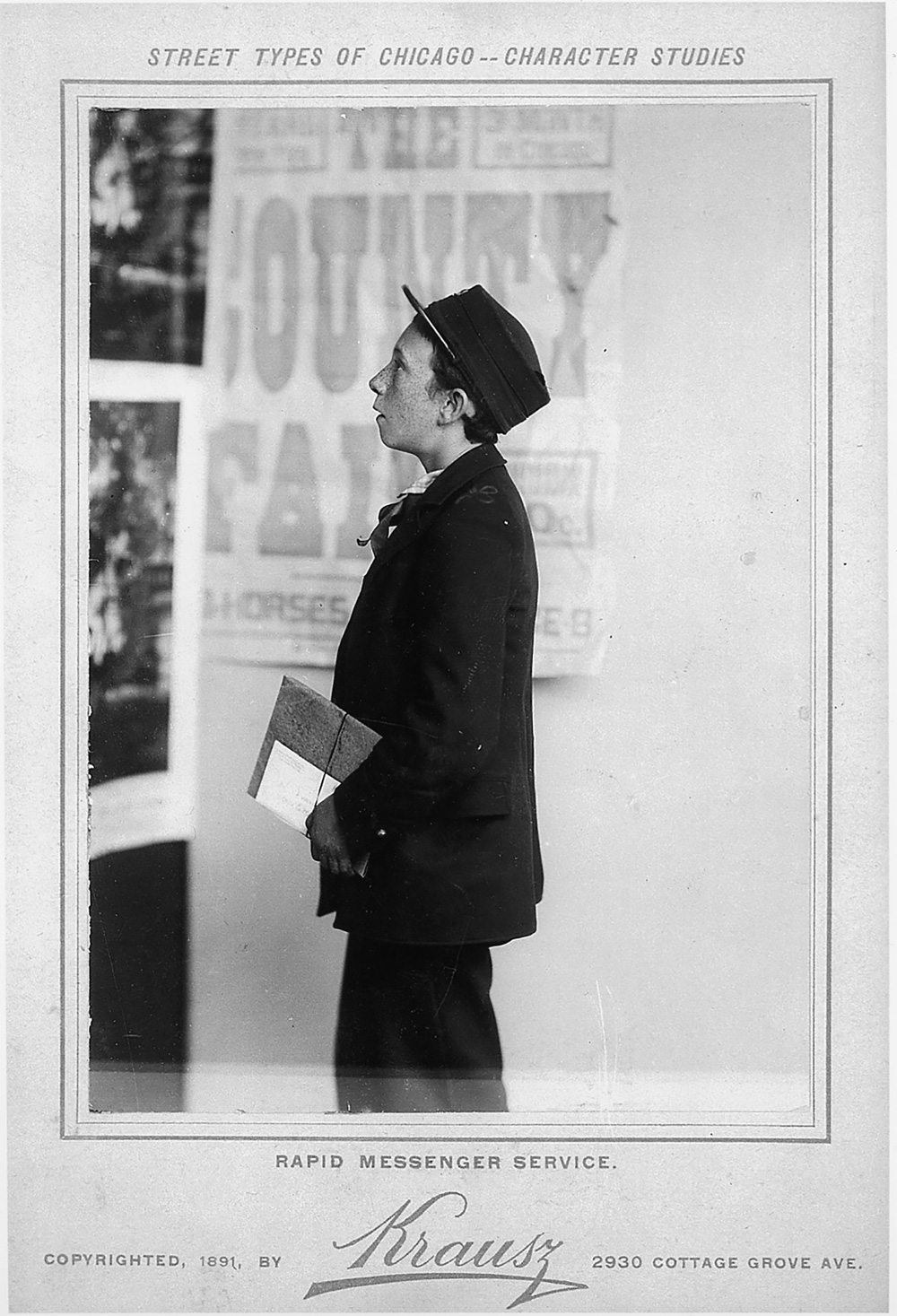
Messenger Boy
In the days before telephones, faxes, e-mail, and instant messaging, Americans relied on human messengers to hand-deliver their urgent messages. A small army of uniformed delivery boys constantly moved through the city, carrying telegrams from telegraph offices to individual customers.
Credit: Chicago Historical Society -
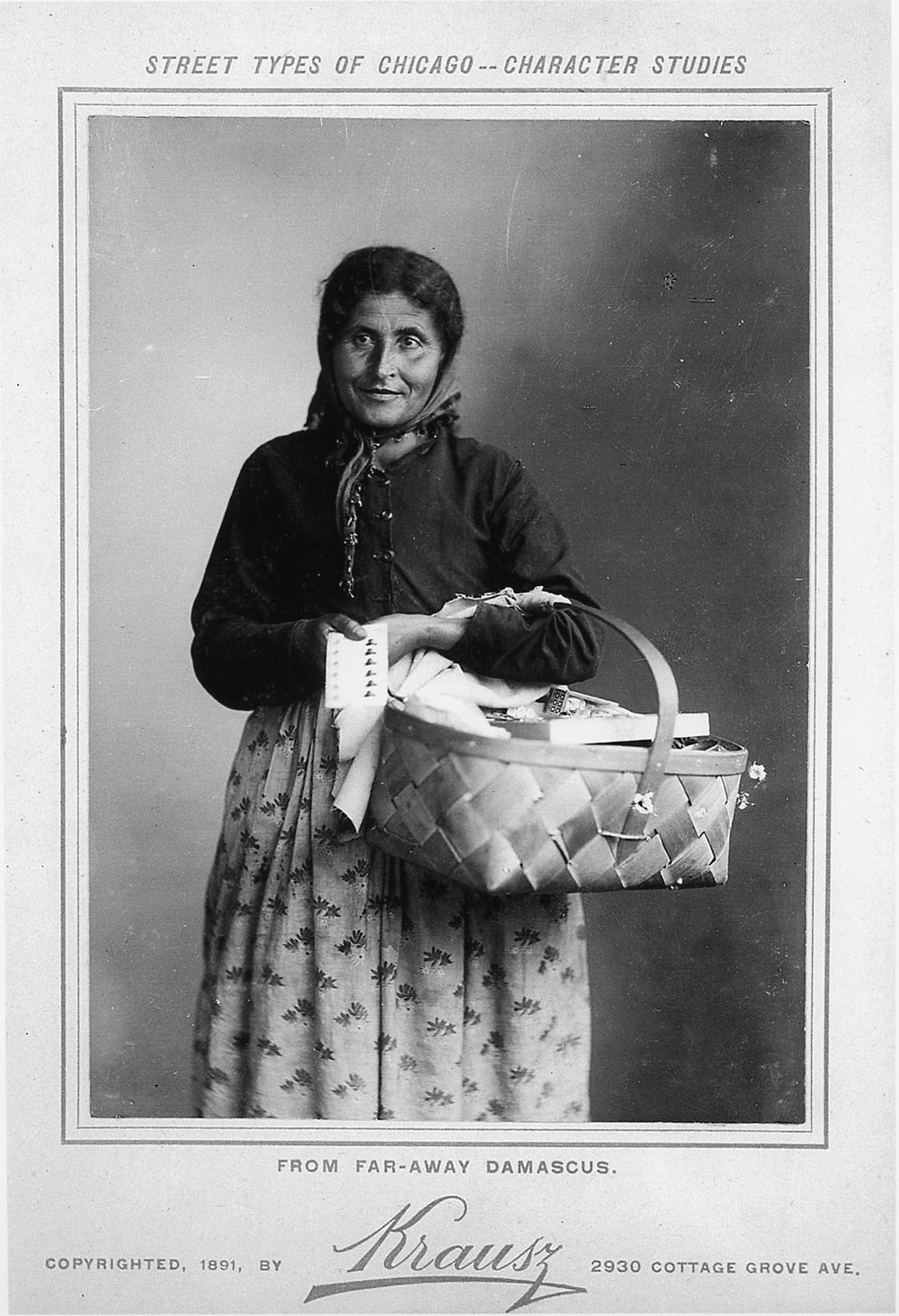
Syrian woman selling sewing notions
Some immigrant women made money for their families selling sewing notions on street corners. In 1895, four cents bought a thimble, a spool of thread, or 25 needles. A pound of beef or a dozen eggs could cost 25 cents.
Credit: Chicago Historical Society -
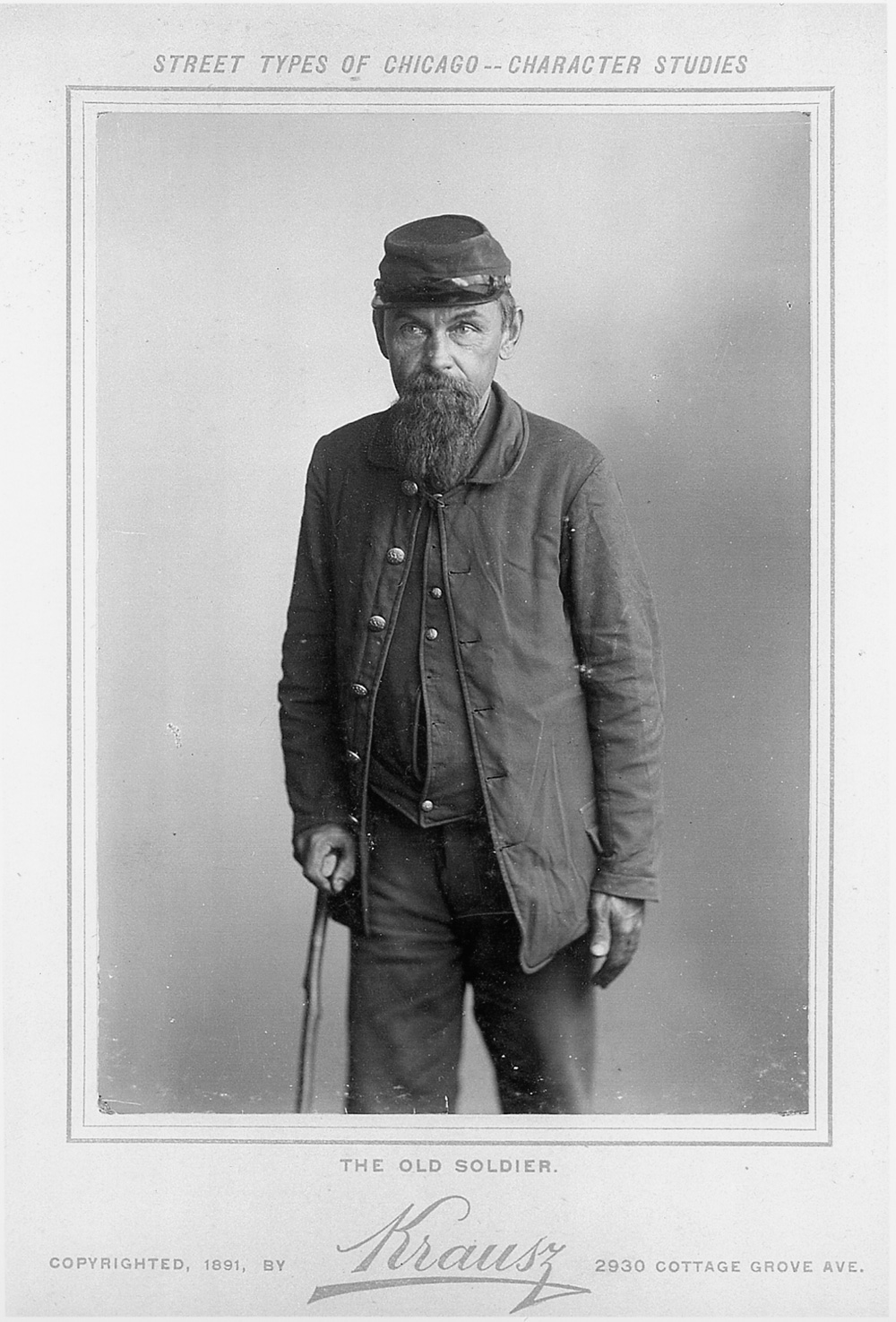
Civil War veteran
Over 22,000 Chicago men volunteered for service during the Civil War. In 1890, veterans pulled on their uniforms and marched in a parade to mark the 25th anniversary of the war's end. A veterans' reunion was held at Adler & Sullivan's newly constructed Auditorium building.
Credit: Chicago Historical Society -
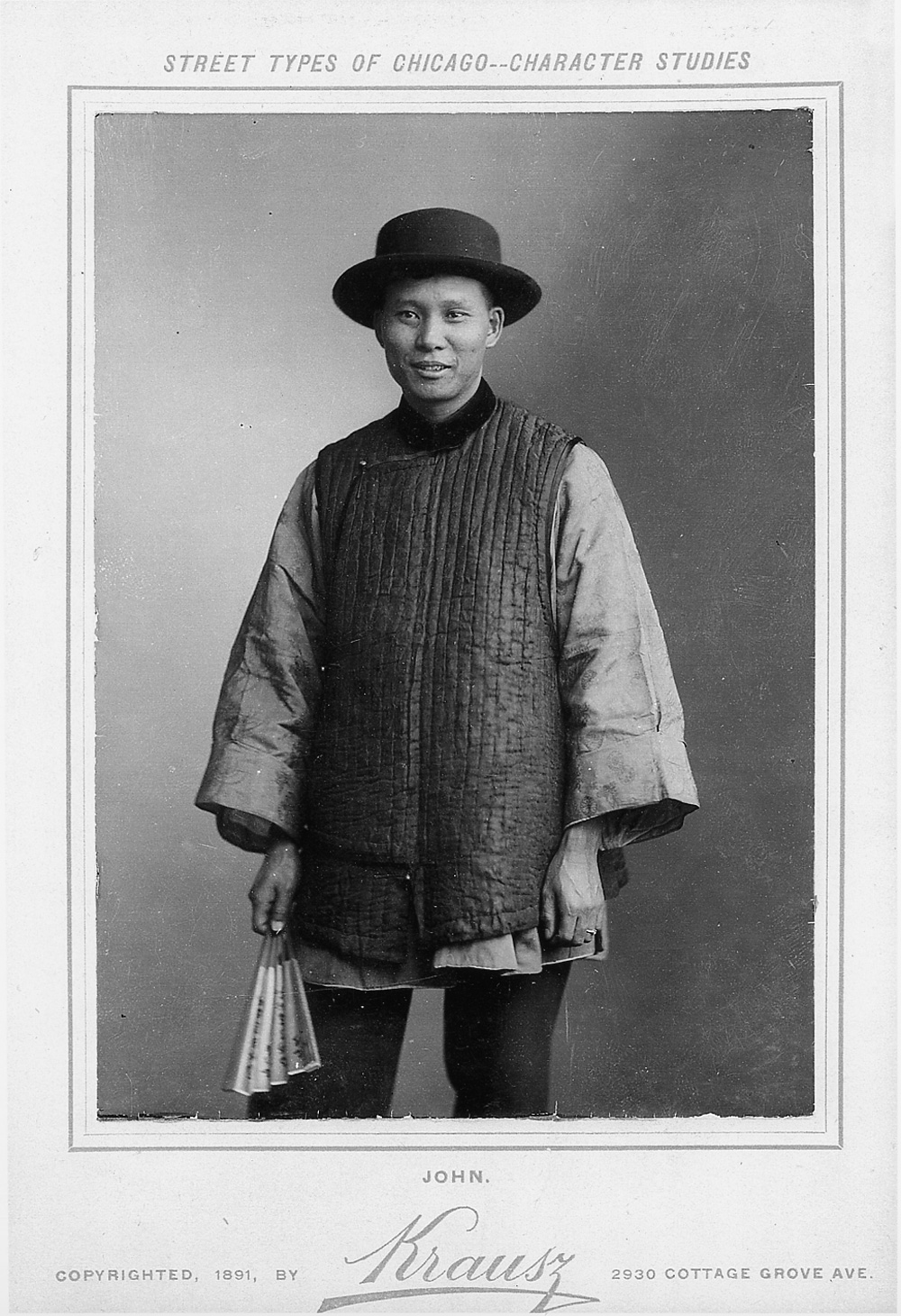
Chinese man with fan and quilted jacket
Chinese immigrants came to America in the middle of the nineteenth century, lured by the California gold rush and the promise of railroad jobs. The first Chinese immigrant said to have settled in Chicago was T. C. Moy, in 1878. Anti-Chinese sentiments led to the restriction and eventually the elimination of Chinese immigration from 1882 until World War II.
Credit: Chicago Historical Society -
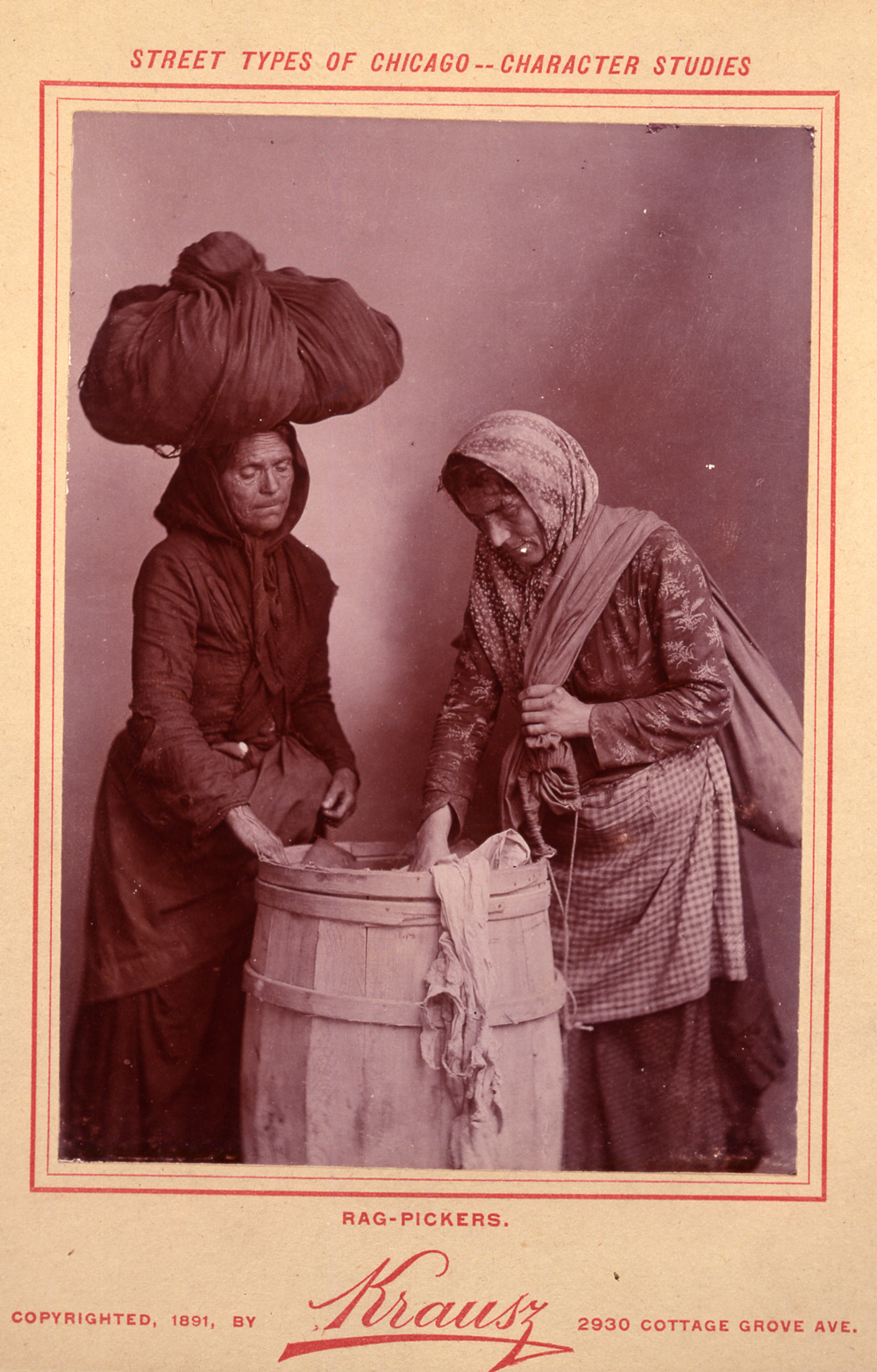
Two women searching through a barrel
Poor immigrants searched garbage bins for scraps of clothing or rags. The scraps were sold to junk dealers or kept and reused. The press generally disapproved of "rag-pickers" and particularly harbored prejudices against poor Italians, singling them out as ignorant and dirty. Some Americans also objected to immigrants who did not know English.
Credit: Chicago Historical Society -
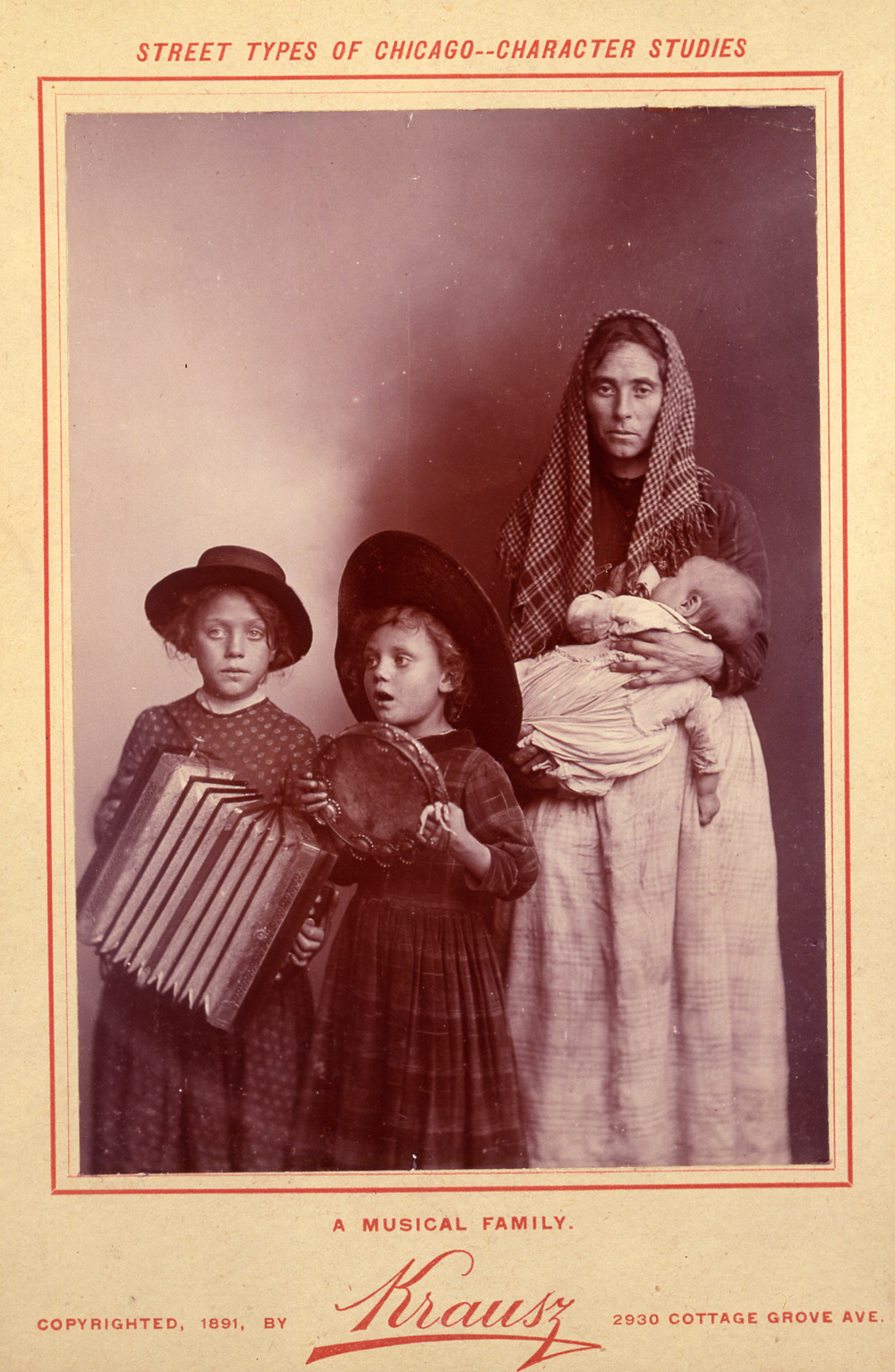
Mother with children playing musical instruments
A song on a street corner could bring in a few pennies for a poor family, in a city where ten percent of the population owned 94% of the wealth. Children's contributions often enabled a family to scrape by. When an 1893 Illinois law made it illegal for children under fourteen to work, many parents bribed city officials to obtain working papers for their underage children.
Credit: Chicago Historical Society -
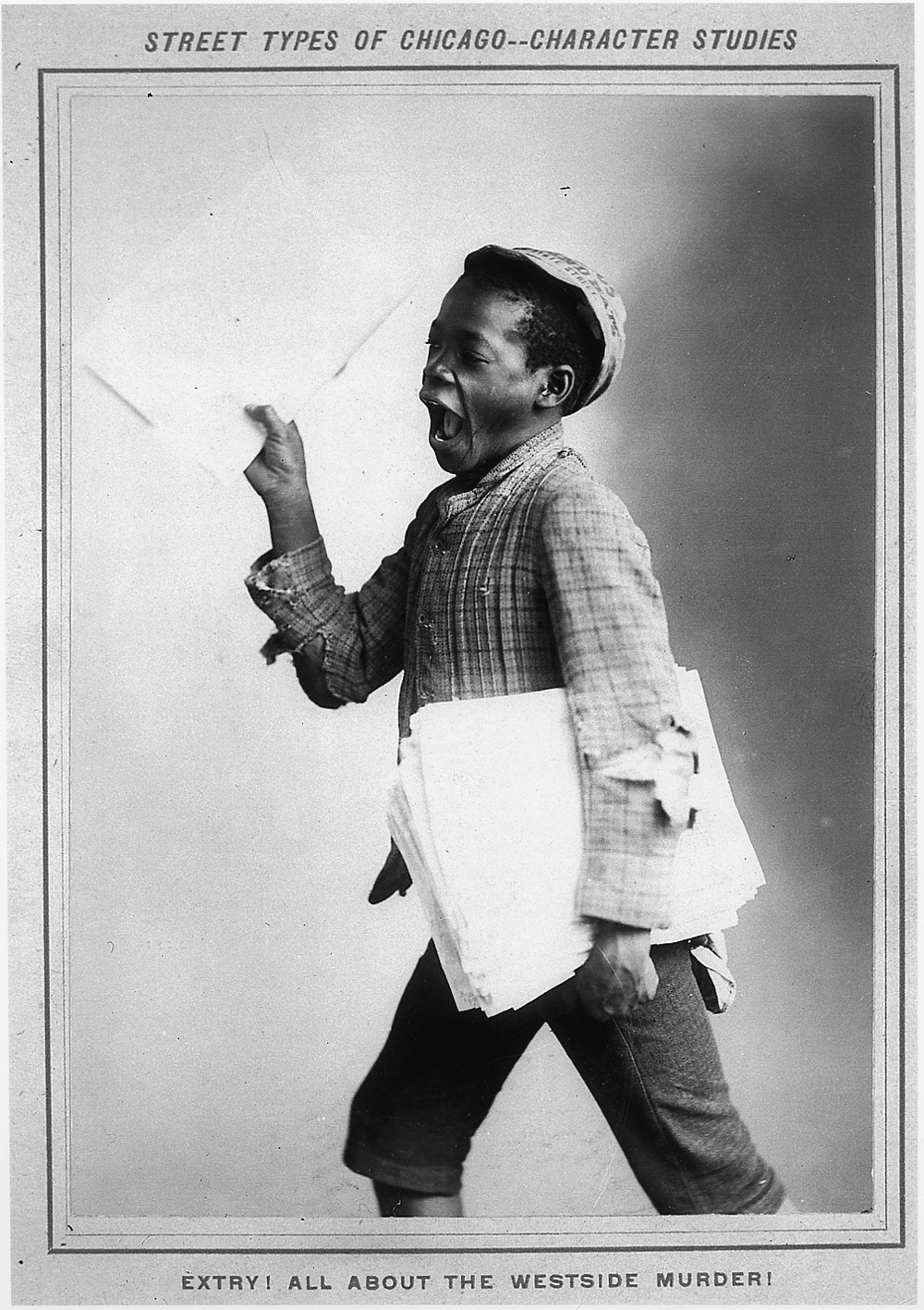
Newsboy
Newsboys — and some newsgirls — were the town criers of nineteenth-century Chicago. They sold newspapers by bellowing out the day's sensational headlines. Dozens of newspapers appeared every day, including foreign-language papers like the German Arbeiter-Zeitung. Some papers published both morning and evening editions.
Credit: Chicago Historical Society -
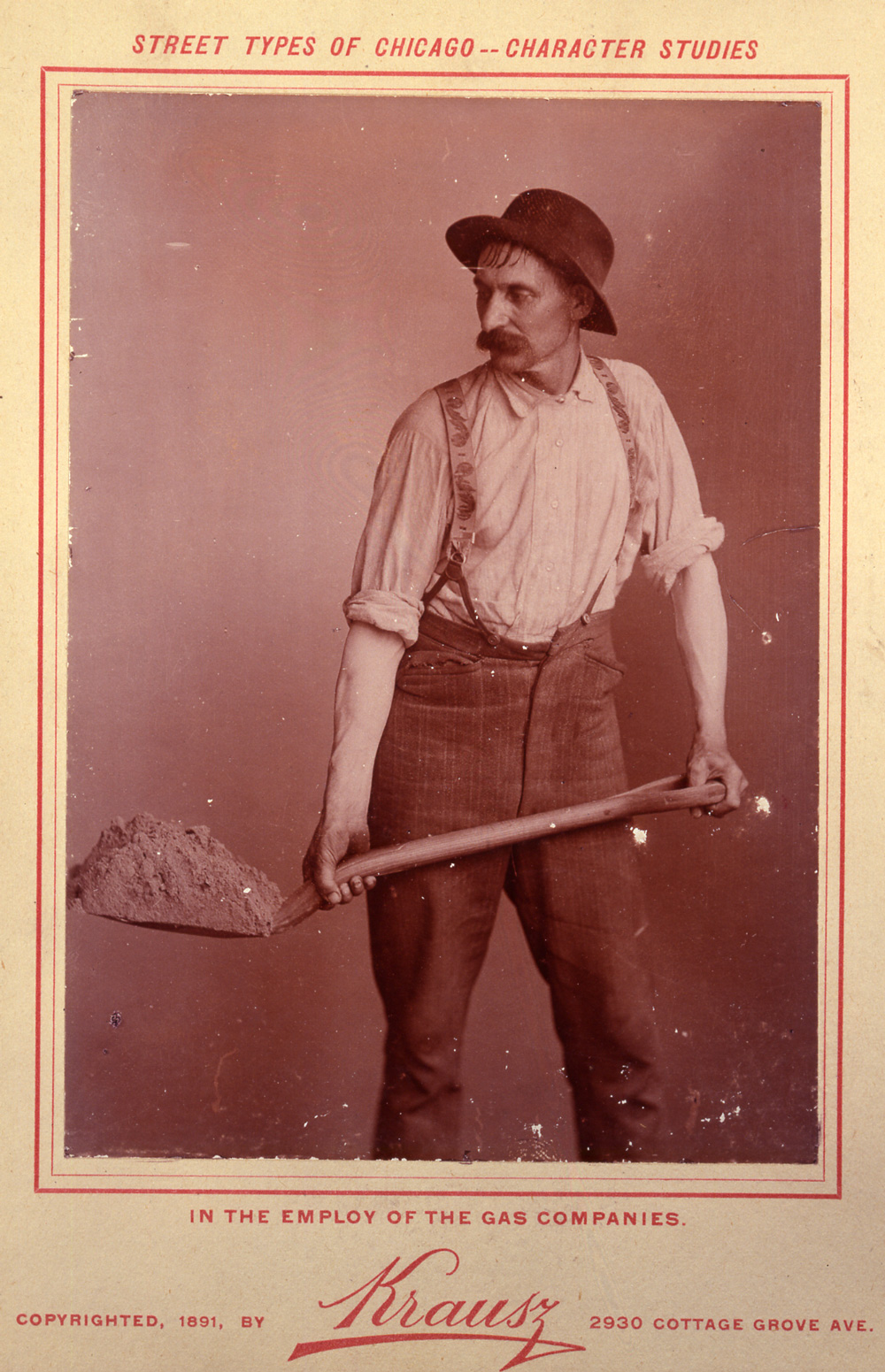
Man with shovel of dirt
Gas lighting was the city's illumination of choice by the middle of the 19th century. Huge labor forces laid pipe throughout Chicago with hand shovels. By the turn of the century, however, Thomas Edison's electric lamp would humble the gas company giants.
Credit: Chicago Historical Society -
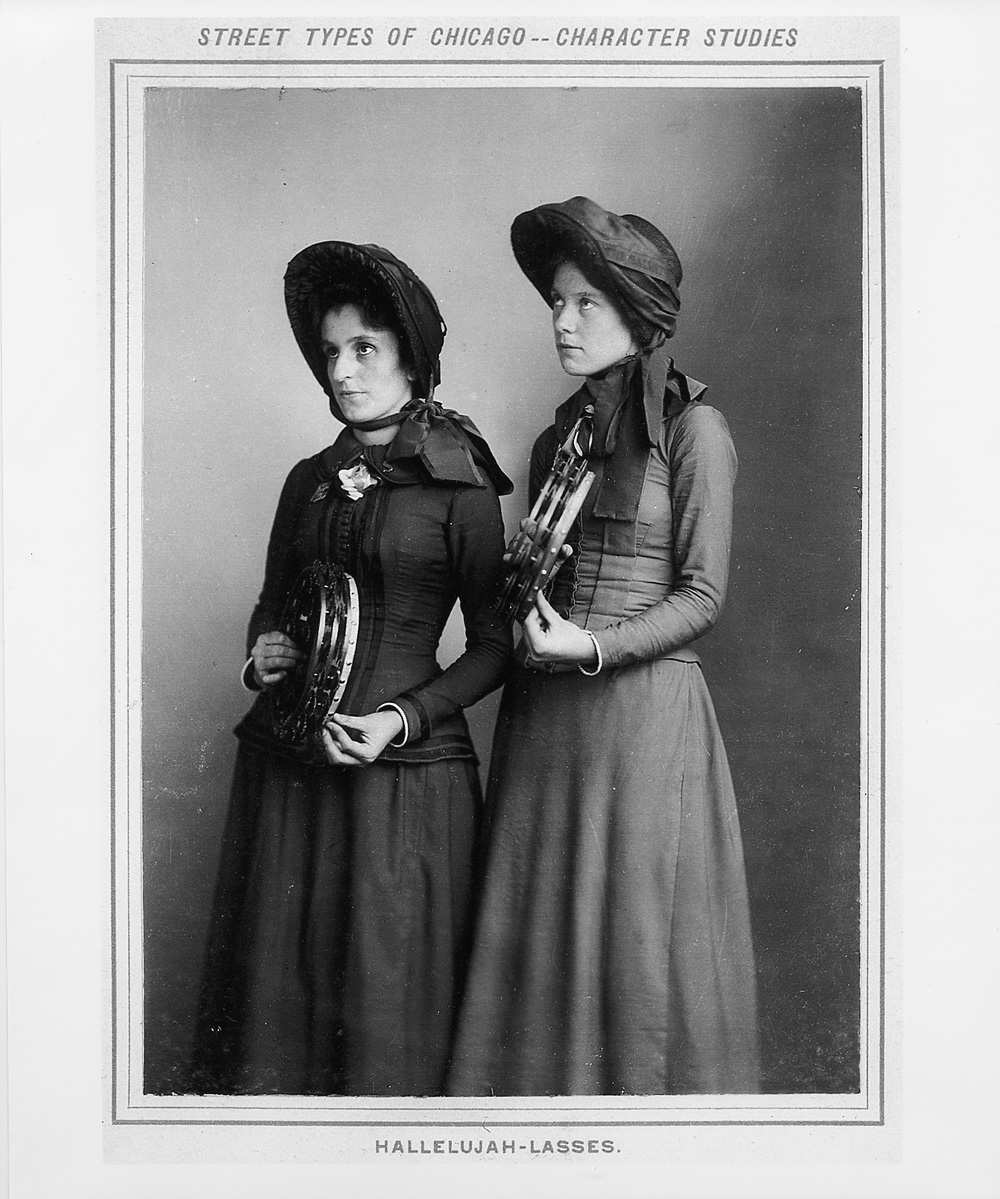
Two women with tambourines
The Salvation Army, a British import, began its mission in Chicago in 1885, attracting working-class men and women with its evangelical Christianity. The "Hallelujah-lasses" stood on street corners with their tambourines, preaching salvation and raising money to help the poor.
-
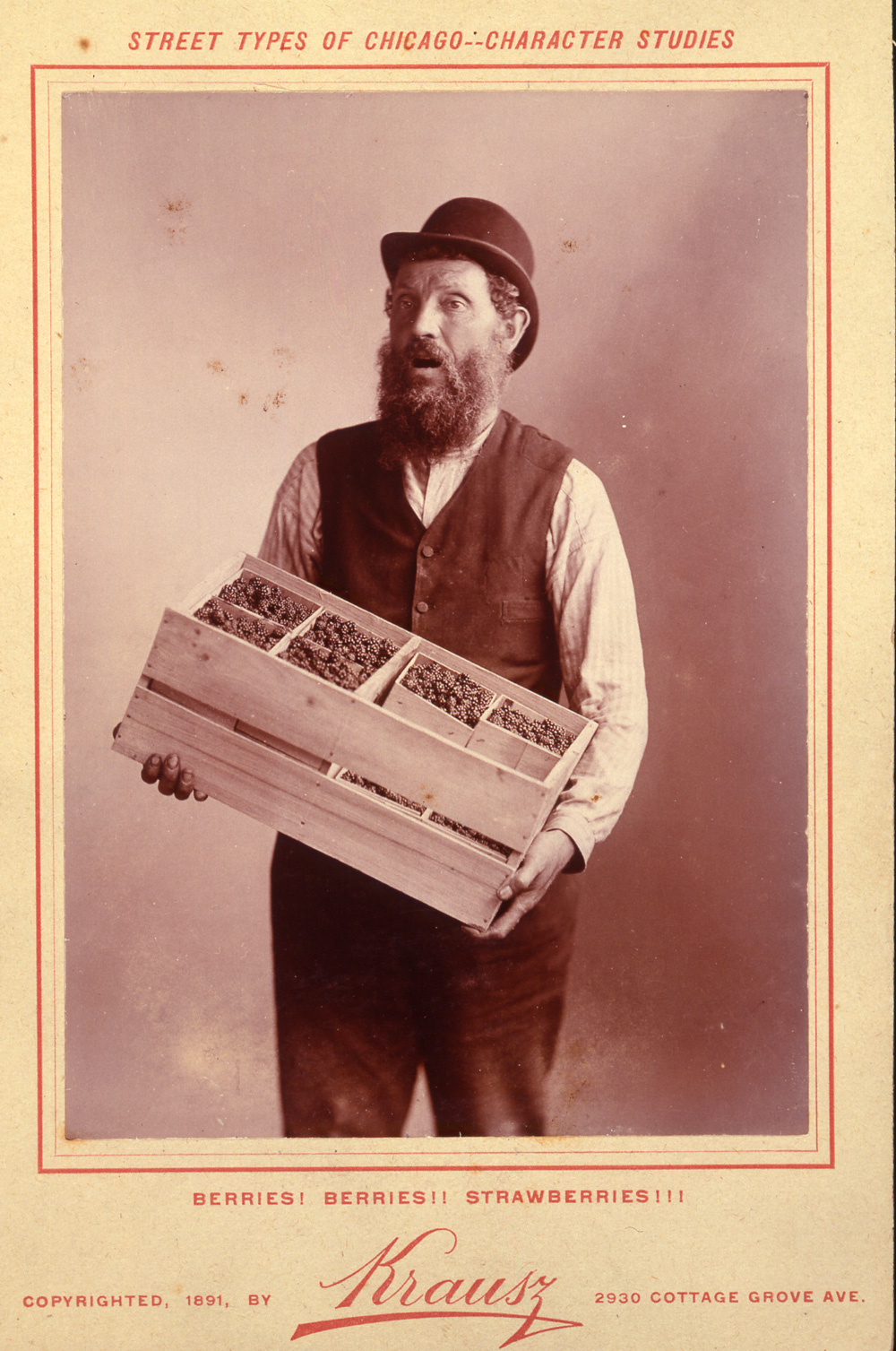
Man selling berries
A large number of Italian immigrants went into the fruit business, getting their start as street peddlers or fruit stand operators. As they found success, they moved into storefronts or into the wholesale business, forming networks with Italian immigrant farmers working in the South and in California.







